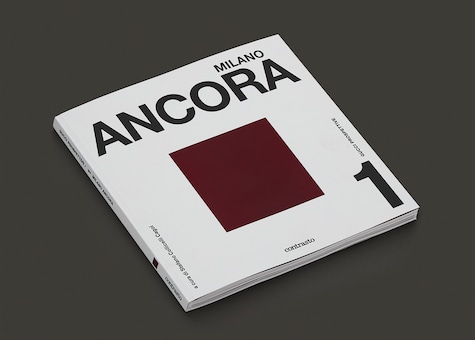Marella Caracciolo Chia recounts the fateful meeting in 1901 between Italian nobility Leone Caetani and Vittoria Colonna, which took place in Ninfa.
The unhappy marriage that followed ended in 1921 when Leone, who by then had inherited the family title of Duke of Sermoneta, sought refuge and a new life in the remote Okanagan Valley, British Columbia. In the wake of his departure, his English mother Ada–a passionate gardener—and his brother Gelasio, completed Leone’s dream to transform the desolate ruins of Ninfa into the lush and verdant garden that features in the Gucci Gift campaign film by Floria Sigismondi.
When Vittoria Colonna first set foot in Ninfa, in the spring of 1901, the medieval ruins were still a romantic wild and mysterious place. Leone Caetani, the eldest son of Onorato and Ada, the Duke and Duchess of Sermeneta, was living at the time in the damp family palace in the nearby town of Cisterna, where he managed the vast family estates in the Pontine marshes. When he was not on horseback checking herds and crops, Leone—an adventurous traveler and a renown scholar of Islamic history —wrote melancholy letters back home.
"I feel so lonely and forgotten," he wrote to his English mother in 1898 in an almost illegible handwriting caused by the effects of quinine on his nervous system, an early remedy to protect against malaria. That April morning in 1901 Vittoria and a small group of friends had left the princely Palazzo Colonna, her family home, at the crack of dawn. The cars they traveled in were amongst the very first in Rome, and left a thunderous noise in the air, permeating the ancient city with the strange scent of modernity. The roads and piazzas, at that early hour, were semi deserted. The air was crisp and the church domes, set against the bright blue sky, reverberated in the pink light. Zooming down the the Via Appia, the party soon entered into that vast landscape that was the Caetani territory. In the golden years of the Belle Epoque, the Caetanis, like the Colonnas, were still in possession of their ancestral lands. Thousands and thousands of hectares that bordered the sea embracing lakes and rivers and made their way inwards towards the peak of the Lepini Mountains enveloping towns such as Sermoneta, Bassiano and Cisterna. "It was more like a small kingdom than a private property,"" Vittoria would write years later. The heart and symbol of this ancestral power was Ninfa. Built by a lake at the foot of the Lepini Mountains, the town of Ninfa has a river of clear, ice-cold water running right though it. The land is fed by a number of clear springs that evaporate in the heat, transforming the air in an almost tangible substance.
Despite the high walls that still surround it, Ninfa—with its seven churches, hundreds of homes, shops and tanneries—was destroyed in a few hours in 1382, after being stormed by the inhabitants of a neighboring and rival town who, lead by a Caetani, stormed upon it in the night setting fire to buildings and killing most of its inhabitants. In the centuries that followed, malaria left Ninfa even more isolated. It became the "small dead town" beloved by Gregorovius, the great author and historian, and by other followers of the romantic mystique. Though charming, Ninfa became renown for its sinister legends. Its isolation ended in the 1920s when the last descendants of the Caetani dynasty cleared the brambles from the ruins and transformed the small city into the poignant garden masterfully evoked by Floria Sigismondi. That first meeting in Ninfa between the 32-year-old Leone and the much younger Vittoria, though seemingly casual, was organized by an uncle of hers. Although the Colonnas were still in possession of most of their vast ancestral estates, their financial situation wasn’t rosy—like that of many other Roman dynasties in the early 20th century. For young women like Vittoria–one of the great beauties of her time—a good marriage was the only option. That April morning, when Vittoria arrived, Leone was taking a stroll amongst the remnants of Ninfa’s ‘hortus conclusus’, a walled garden where four centuries earlier his ancestor Francesco Caetani—Governor of Milan, viceroy of Sicily and grandee of Spain—had planted an extraordinary collection of anemones. Vittoria, drawn by the sound of water gushing into ancient cisterns, approached the imposing stone portal that still leads into this part of the garden.
"I can see your dear face with your mustache blowing in the wind," wrote the Princess a few years later from London, “and now it feels as if I already loved you, though I that’s impossible.” That day Ninfa’s meadows were covered with cyclamens and violets. The cold, clear waters of the Ninfeo River—where rare spotted trout swam—flowed quickly under the bridges. Food, ceramic plates, glass tumblers and silver cutlery engraved with the family crest were assembled on a large linen cloth spread on the river's edge. Leone was invited to join the picnic party. The ruins covered with ivy, the sound of water, the scent of the wild jasmine and the roses all created the magical and enchanting atmosphere that Vittoria would remember for years to come, and which is brought to life in Sigismondi’s film. "In those days," Vittoria wrote in her memoirs, "Ninfa was isolated and full of poetry." The garden embraced Leone and Vittoria and sealed their destiny. "We sat next to each other during that luncheon"—Vittoria wrote—"and by the end of the day, Leone asked me to marry him.

Ссылка скопирована в буфер обмена.